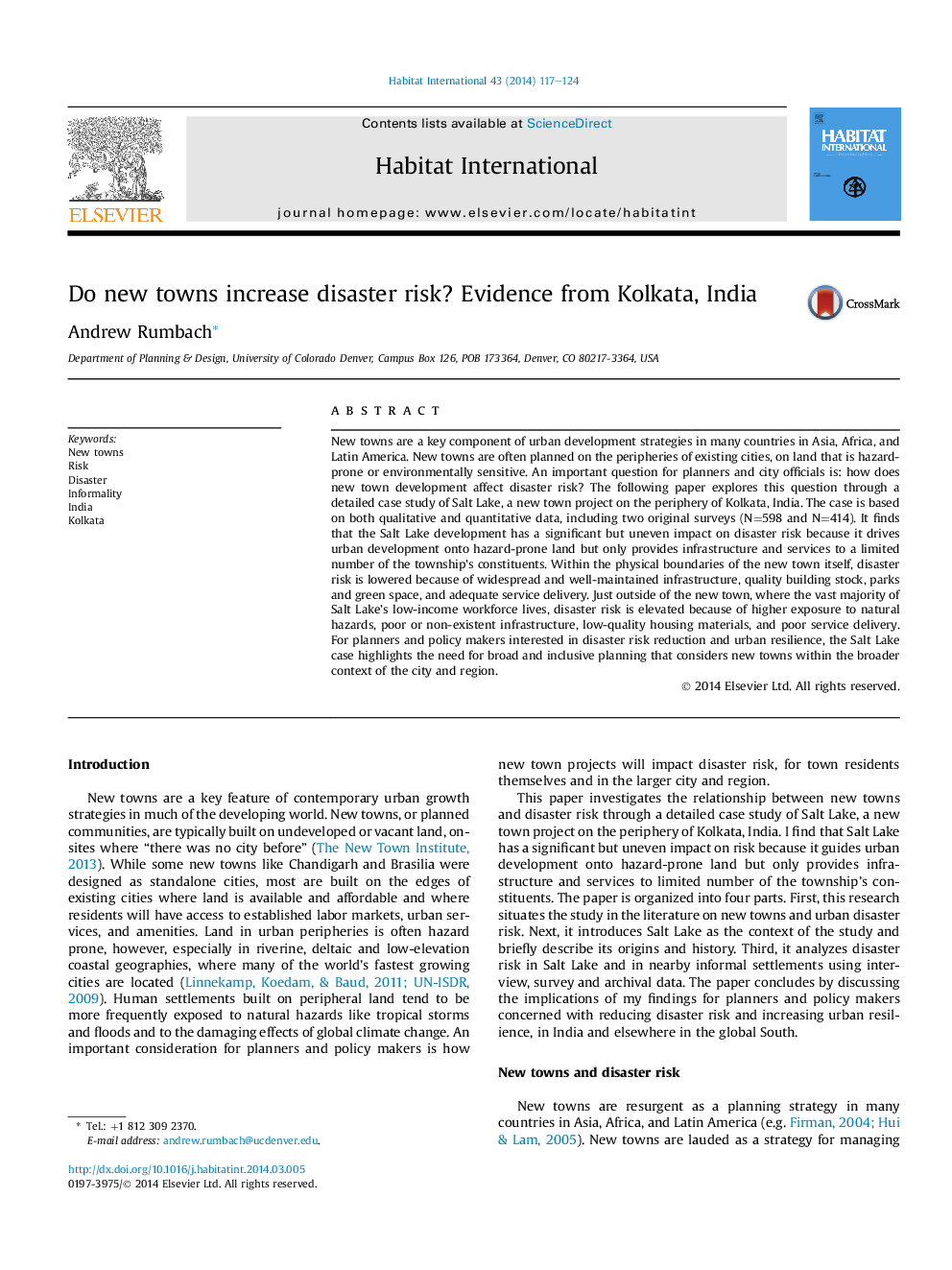| کد مقاله | کد نشریه | سال انتشار | مقاله انگلیسی | نسخه تمام متن |
|---|---|---|---|---|
| 7456376 | 1484499 | 2014 | 8 صفحه PDF | دانلود رایگان |
عنوان انگلیسی مقاله ISI
Do new towns increase disaster risk? Evidence from Kolkata, India
ترجمه فارسی عنوان
آیا شهرهای جدید افزایش خطر فاجعه را افزایش می دهند؟ شواهد از کلکته، هند
دانلود مقاله + سفارش ترجمه
دانلود مقاله ISI انگلیسی
رایگان برای ایرانیان
کلمات کلیدی
شهرهای جدید، خطر، فاجعه، غیر رسمی، هند، کلکته،
موضوعات مرتبط
علوم انسانی و اجتماعی
علوم اجتماعی
توسعه
چکیده انگلیسی
New towns are a key component of urban development strategies in many countries in Asia, Africa, and Latin America. New towns are often planned on the peripheries of existing cities, on land that is hazard-prone or environmentally sensitive. An important question for planners and city officials is: how does new town development affect disaster risk? The following paper explores this question through a detailed case study of Salt Lake, a new town project on the periphery of Kolkata, India. The case is based on both qualitative and quantitative data, including two original surveys (N=598 and N=414). It finds that the Salt Lake development has a significant but uneven impact on disaster risk because it drives urban development onto hazard-prone land but only provides infrastructure and services to a limited number of the township's constituents. Within the physical boundaries of the new town itself, disaster risk is lowered because of widespread and well-maintained infrastructure, quality building stock, parks and green space, and adequate service delivery. Just outside of the new town, where the vast majority of Salt Lake's low-income workforce lives, disaster risk is elevated because of higher exposure to natural hazards, poor or non-existent infrastructure, low-quality housing materials, and poor service delivery. For planners and policy makers interested in disaster risk reduction and urban resilience, the Salt Lake case highlights the need for broad and inclusive planning that considers new towns within the broader context of the city and region.
ناشر
Database: Elsevier - ScienceDirect (ساینس دایرکت)
Journal: Habitat International - Volume 43, July 2014, Pages 117-124
Journal: Habitat International - Volume 43, July 2014, Pages 117-124
نویسندگان
Andrew Rumbach,
